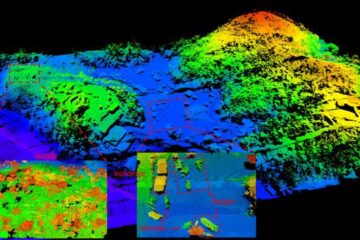Will global warming improve crop production?

Winter temperatures are on the rise and scientists note this change will actually increase a plant’s exposure to freezing temperatures
Scientists from Agriculture and Agri-Food Canada predict crops will be at a greater risk of winter damage in the future even though the climate will be warmer. Perennial forage crops are grown on more than 40% of the cultivated land in Eastern Canada and other regions of North America, where they constitute the backbone of the livestock industry. The study of the impact of this significant warming trend is published in the September-October issue of Agronomy Journal, published by the American Society of Agronomy.
The loss of snow cover due to warmer winter conditions will increase exposure of plants to freezing temperatures. The authors also conclude that the occurrence of above-freezing temperatures and loss of cold hardiness will increase with climate warming. Forage crops are also likely to enter the winter in a lower state of cold hardiness due to warmer fall temperatures. Winter temperatures are expected to increase by 2 to 6 degrees C over the next 50 years in Eastern Canada; however, survival of perennial crops over the winter months requires the right climatic conditions. Sub-freezing temperature, loss of cold hardiness due to warm periods, ice encasement, and soil heaving can result in frequent crop losses.
Gilles Bélanger, project leader, said, “This might be a surprise to many that warmer winter conditions will mean greater risks to perennial forage crops. Perennial forage crops in Canada and in the northern part of the United States prefer the comfort of a nice snow cover after a good rest period in the fall. Rain, ice, and no snow cover in the middle of the winter will occur more often in the future; this brings no comfort to perennial forage crops.”
For this study, conducted from 1999 to 2001, scientists developed agro-climatic indices related to the effect of climate conditions on winter survival of perennial forage crops. These agro-climatic indices were then calculated for current conditions (1961-90) and two future periods (2010-39, 2040-69). Sixty-nine climatic stations located in all agricultural areas of Eastern Canada were used.
For forage producers, climate change will mean increased risks in an agricultural industry already facing major challenges. The authors of the study, however, are confident that current and future research efforts in the development of improved cultivars and the adaptation of management practices will help producers make the best of climate change.
Media Contact
All latest news from the category: Agricultural and Forestry Science
Newest articles

A universal framework for spatial biology
SpatialData is a freely accessible tool to unify and integrate data from different omics technologies accounting for spatial information, which can provide holistic insights into health and disease. Biological processes…

How complex biological processes arise
A $20 million grant from the U.S. National Science Foundation (NSF) will support the establishment and operation of the National Synthesis Center for Emergence in the Molecular and Cellular Sciences (NCEMS) at…

Airborne single-photon lidar system achieves high-resolution 3D imaging
Compact, low-power system opens doors for photon-efficient drone and satellite-based environmental monitoring and mapping. Researchers have developed a compact and lightweight single-photon airborne lidar system that can acquire high-resolution 3D…





















